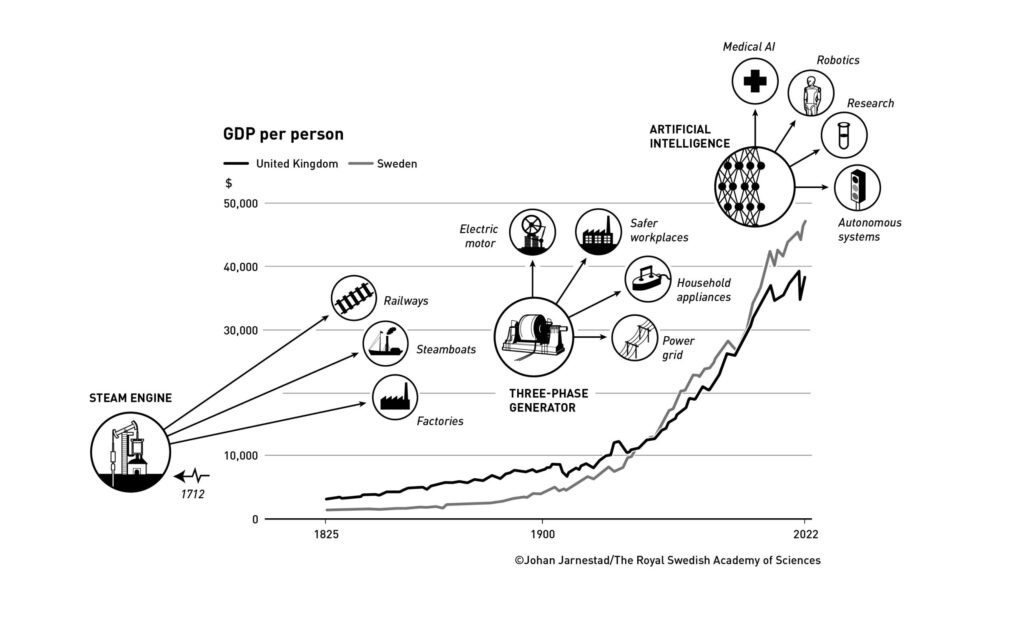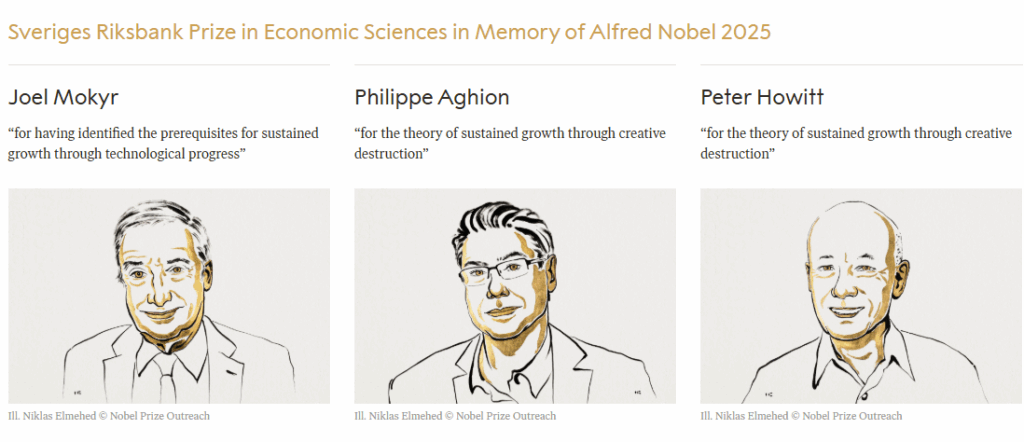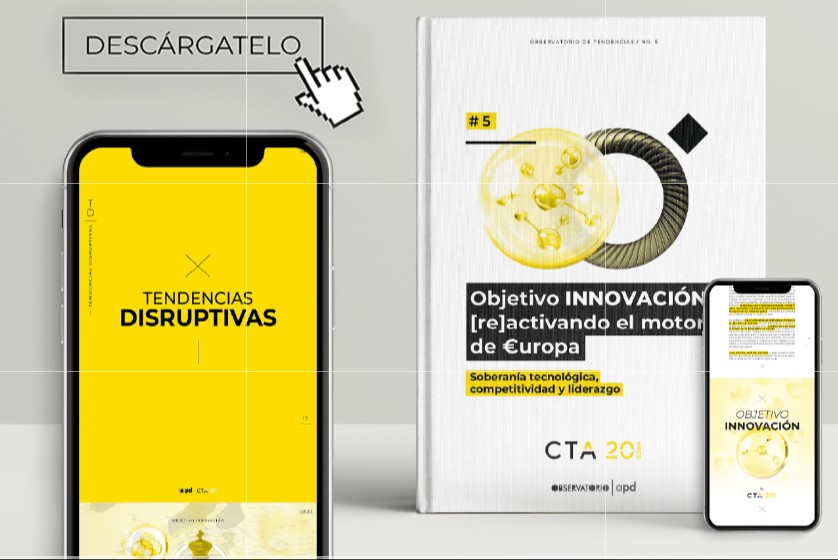Why has the study of innovation and disruption deserved a Nobel Prize?
“For having explained innovation-driven growth.” This was the argument put forward by the Royal Swedish Academy of Sciences in awarding the prize jointly to Joel Mokyr, for his work on sustained growth through technological progress, and to Philippe Aghion and Peter Howitt, for their theory of creative destruction.
But what message can we read between the lines? Keep reading!

200 years of uninterrupted growth
Over the past two centuries, for the first time in history, the world has experienced sustained economic growth.
That is why the Nobel Prize in Economics (officially the Sveriges Riksbank Prize in Economic Sciences in Memory of Alfred Nobel 2025) has been awarded this year to Mokyr, Aghion, and Howitt for explaining how innovation provides the driving force behind continuous progress.
The key insights highlighted by the Royal Swedish Academy of Sciences from each laureate’s theories are as follows:
- Joel Mokyr demonstrated that for innovations to occur in a self-sustaining way, we must not only know that something works but also have scientific explanations for why it works. The latter was often missing before the Industrial Revolution, which made it difficult to build upon new discoveries and inventions. Mokyr also emphasized the importance of societies being open to new ideas and allowing change.
- Philippe Aghion and Peter Howitt, in a 1992 paper, developed a mathematical model for what is known as creative destruction: when a new and better product enters the market, firms selling older products lose competitiveness. Innovation thus represents something new, and therefore creative, but it is also destructive, since companies whose technologies become obsolete are overtaken by competitors.

Some key messages highlighted by the Royal Swedish Academy of Sciences
Some of the messages highlighted in the outreach information provided by the Royal Swedish Academy of Sciences about the laureates’ theories are:
- Impact of AI (Artificial Intelligence): Mokyr’s work shows that artificial intelligence (AI) could strengthen the feedback loop between propositional knowledge (how things are) and prescriptive knowledge (how to do things), and increase the speed at which useful knowledge accumulates — in other words, boosting innovation capacity.
- Sustained growth cannot be taken for granted. Stagnation has been the norm for most of human history. According to the Royal Swedish Academy of Sciences, the laureates’ work shows “that we must be alert and counter threats to continuous growth: a few firms dominating the market, restrictions on academic freedom, the spread of knowledge regionally rather than globally, or blockages imposed by potentially disadvantaged groups. If we do not respond to these threats, the engine that has provided sustained growth — creative destruction — could stop working, and we would return to a state of stagnation.”
- Sustained growth is not the same as sustainable growth (it does not automatically translate into improvements in human well-being). Innovations can have significant negative side effects. Mokyr argues that these negative effects sometimes trigger processes that allow solutions to emerge, making technological development a self-correcting process. However, the Royal Swedish Academy notes that “it is clear that this often requires well-designed policies, particularly in areas such as climate change, pollution, antibiotic resistance, rising inequality, and unsustainable use of natural resources.”
- Innovation creates winners and losers. This applies not only to companies but also to their employees. High growth requires a lot of creative destruction, meaning more jobs disappear and there is potential for high unemployment. Therefore, it is important to support affected individuals while helping them move to more productive jobs. Protecting workers — but not jobs — for example through a system sometimes called flexicurity, may be the appropriate solution, according to the Royal Swedish Academy.
- The laureates also demonstrate the importance of society creating favorable conditions for skilled innovators and entrepreneurs. Social mobility, where a person’s occupation is not determined by their parents’ identity, is therefore important for growth.
- Turning new ideas into reality requires practical, technical, and, no less importantly, commercial knowledge. Otherwise, even the brightest ideas remain on paper, like Leonardo da Vinci’s helicopter designs. The Royal Swedish Academy explains that Mokyr emphasized that sustained growth first occurred in Britain because there was a large number of skilled artisans and engineers who could understand designs and transform ideas into commercial products.
What does the APD-CTA Observatory “Objective Innovation” contribute?
Europe faces a significant problem of losing competitiveness compared to other emerging economies, and innovation (the focus of the studies awarded the 2025 Nobel Prize in Economics) could be the key to revitalizing it. Over the past two decades, Europe’s GDP has grown by just over 20%, while the United States has grown by 70% and China by 290%.

In 2025, APD (Association for the Progress of Management) and CTA launched the APD CTA Observatory #5, “Objective Innovation: Reactivating Europe’s Engine”, which analyzes how innovation is and will continue to be the key element for achieving technological sovereignty, boosting competitiveness, and establishing Europe’s true leadership in the new global framework.
The Objective Innovation Observatory brings together nearly fifty prestigious participants, including ministers, regional councilors, company presidents and executives, scientists, experts, philosophers, and many other high-level profiles.

